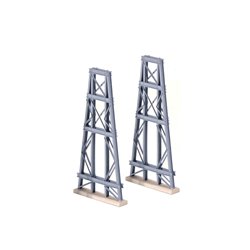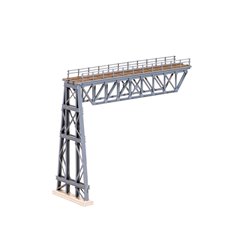Static grass puffer bottles work by manually charging model grass fibres with static electricity. When the charged...
No products
Product successfully added to your shopping cart
There are 0 items in your cart. There is 1 item in your cart.
Search Tips
Make your own wooden trestle bridge for a layout.
One of the most enjoyable elements of creating a layout is to scratch-build significant scene elements, whether that be buildings or other fixed structures such as bridges. Many manufacturers will create such elements in kit form and these can be easily built and integrated into a layout. One drawback of using this 'off-the-shelf' approach is that the kit in question may not always integrate easily into the layout. In this case, the layout may have to be adjusted to accept the item. This is time-consuming and may result in additional work that the modeller had not initially factored in.
One alternative approach is to scratch-build items which can be adapted as required to fit into the landscape. For example, a wooden trestle bridge can be designed and built with minimal cost and will inevitably be rewarding to assemble. The initial design can be broken down into specific elements such as vertical supports and transverse supports and sketched onto a sheet of paper at the appropriate scale for the intended layout. This now forms the assembly plan/template and can be secured in place onto a corkboard and covered with wax paper. The individual wooden elements can now be placed on the board and assembled in place using the plan as a template. Pins can be used to hold the individual pieces in place whilst adhesive is applied to assemble specific elements. The wax-proof paper will protect the plan/template by ensuring any excess glue is easily removed and does not inadvertently glue the assembly to the plan!
Once individual assemblies have been created and the glue has cured sufficiently these elements can then be test-fitted onto the layout to check for correct fit and alignment and to establish any requirements for fine-tuning. Once all is ok the individual elements can be assembled in situ if required or can be assembled remotely if that may be easier to factor in any painting or weathering requirements needed.
Click here to receive the tips weekly in your mailbox. You can unsubscribe at any time.









